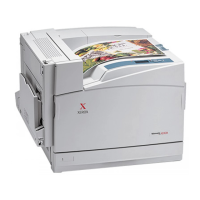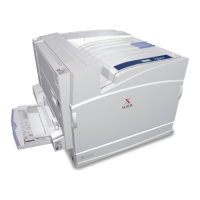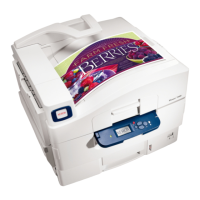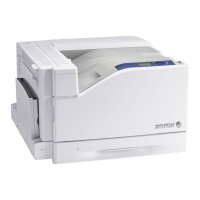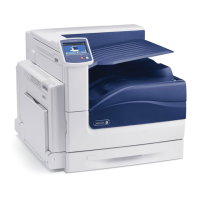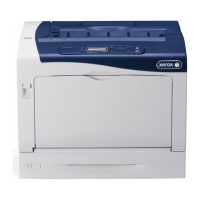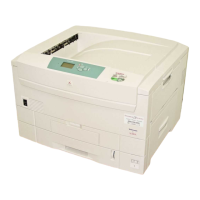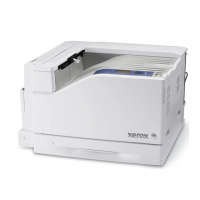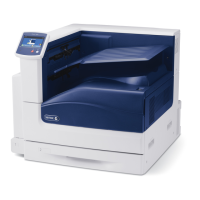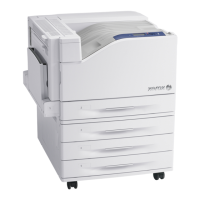January 2010
3-3
Phaser 7760 Color Laser Printer
Print-Quality Problems Overview
Image Quality
Revised
Print-Quality Problems Overview
Print-quality defects can be attributed to printer components, consumables, media, internal
software, external software applications and environmental conditions. To successfully trouble-
shoot print-quality problems, as many variables as possible must be eliminated. The first step
is to generate prints using printable pages embedded in the printer on laser paper. The paper
should be from an unopened ream that has been acclimated to room temperature and you
should ensure that genuine Xerox Toner is installed in the printer.
Print the Paper Tips Page (refer to Information Pages Menu) for media that has been tested
and approved for use in the Phaser 7760 printer. If the print-quality defect is still present when
printing on approved media from unopened ream of paper, then software applications, and
environmental conditions need to be researched.
Print a Service Usage Profile (refer to Printer Menu Map) to determine the temperature and
humidity the printer has been operating under. Compare this to the environmental specifica-
tions for the printer found in Introduction Section, Environmental Specifications. Temperature
and humidity extremes can adversely affect the Xerographic and fusing characteristics of the
printer.
When analyzing a print-quality defect, first determine if the defect occurs in All Colors or only
One Color and if it is repeating or random. Continuous defects in the process direction, such
as Voids and Lines, are the most difficult to diagnose. The visible surfaces of all rollers should
be inspected for obvious defects.
Defects Associated with Specific Printer Components
Some print-quality problems can be associated with specific assemblies. The most common
problems and the associated assemblies are the ROS, Imaging Units, Developer Housings,
Accumulator Belt Assembly, Fuser, and Paper and Paper Trays.
The ROS
Potential Defects:
• Streaks from contamination on ROS window (usually Single Color)
• Light Image (Single Color, or All Colors)
• Banding (Slow Scan direction)
The Imaging Units
Potential Defects (usually Single Color):
• Spots
• Deletions
• Bands
• Repeating defects - 44 mm (1.7 in.) or 94 mm (3.7 in.)
The Developer Housings
Potential Defects (usually Single Color):
• Bead Carryout (grit on copy)
• Spots
• Deletions
•Mottle
• Uneven density front to rear
• Repeating defects - 28.3 mm (1.1 in.)
The Accumulator Belt Assembly
Potential Defects (usually All Colors):
• Spots
• Deletions
• Banding
• Uneven density front to rear
• Offsetting/Ghost Images (Cleaner malfunction)
The Fuser
Potential Defects (All Colors):
• Streaks
• Spots
• Bands
• Offsetting
• Repeating defects - 84 mm (3.3 in.) or 94 mm (3.7 in.)
• Transfer Roller - 88 mm
Paper and Paper Trays
Potential Defects (All Colors):
• Mottled Image (low quality or damp paper)
• Creases and folds
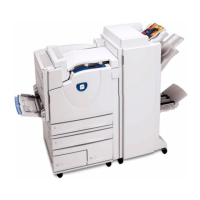
